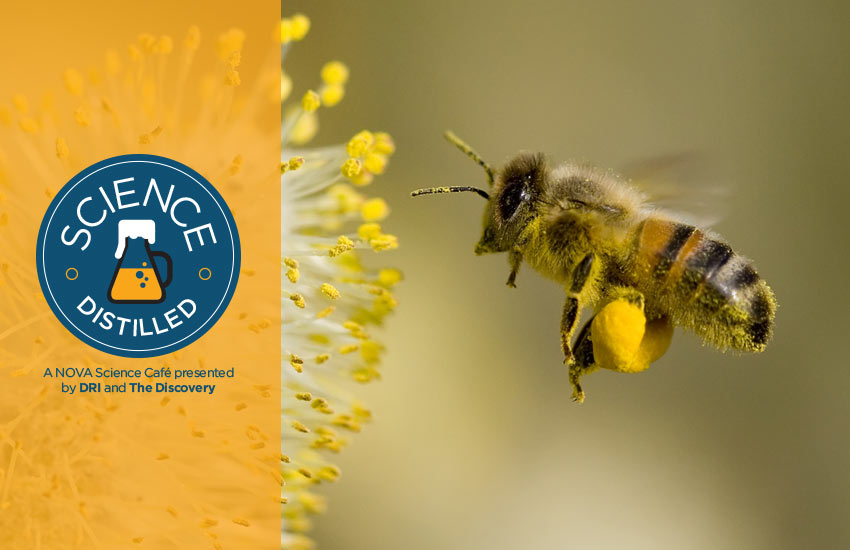Science Distilled, a new lecture series created by DRI and The Discovery, makes cutting-edge science approachable through presentations on current and curious topics held at hip locations in a social atmosphere.
How do raptors, butterflies, and flowers secretly govern the ecosystems around them?
What do raptors, butterflies, and insects have in common? Their unique adaptations not only allow them to thrive in a changing world, but also play a part in governing the ecosystems around them in incredible ways.
Have you ever wondered how raptors like Red-tailed hawks change their lives to exist in urban areas? Justin White is conducting studies to understand how these hawks adapt to life in the city, and how people develop relationships with them. Matt Forister has been working to translate over 40 years of data into a meaningful and dynamic picture of insect communities in the western United States and how they are responding to changing local and global conditions. Anne Leonard will talk about her work on the hidden complexity of flowers and bees. We all know flowers can be colorful, scented, and patterned, but how have these signaling strategies evolved to manipulate the behavior of bee pollinators? And how about the nutritional offering of floral rewards – why do some flowers offer pollen, others nectar, and many both?
Time: Doors open at 7:00pm, presentation begins at 7:30pm
Location: IMBÎB Custom Brews, 785 E. 2nd Street, Reno
Justin White, PhD candidate
Specialist in urban ecosystems, human-environment interactions, and public engagement in research. Justin led the Reno Hawk Project to engage the community around Red-tailed hawks in Reno-Sparks urban areas.
Matt Forister, PhD
Matt is a life-long lover of insects. Matt’s research seeks to understand the great diversity of insects on the planet, especially insects that are specialized for feeding on plants.
Anne Leonard, PhD
Anne’s research bridges topics of signaling, and animal behavior and communication. After years of studying mate choice in crickets and spiders, she became fascinated with bees’ abilities to learn and remember complex relationships with flowers’ color and scent.





